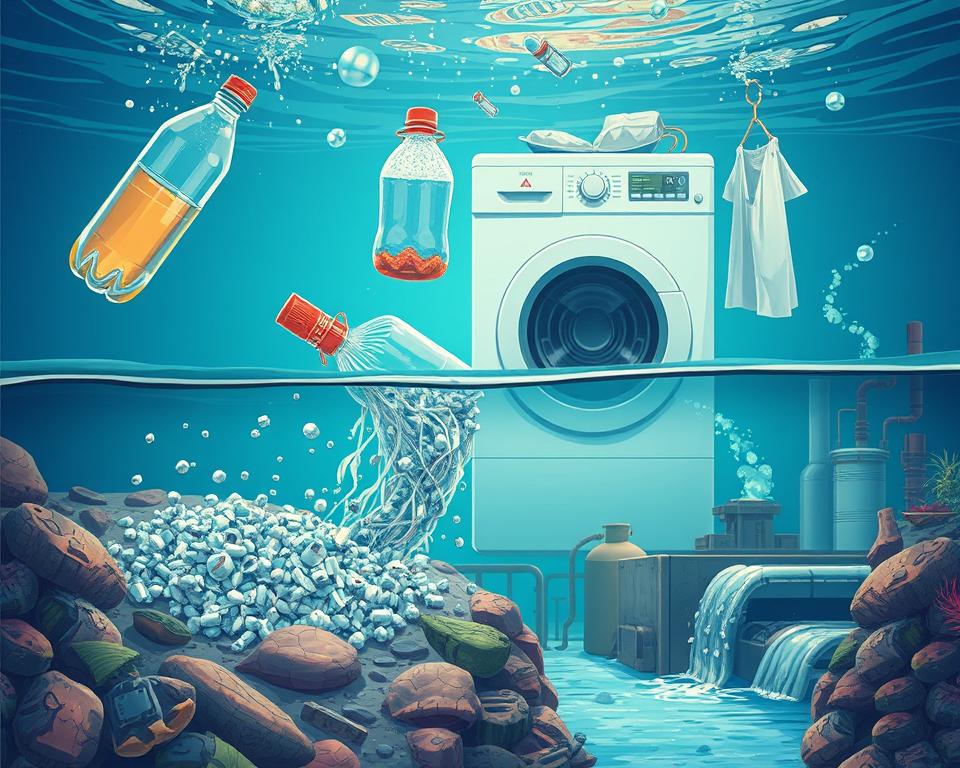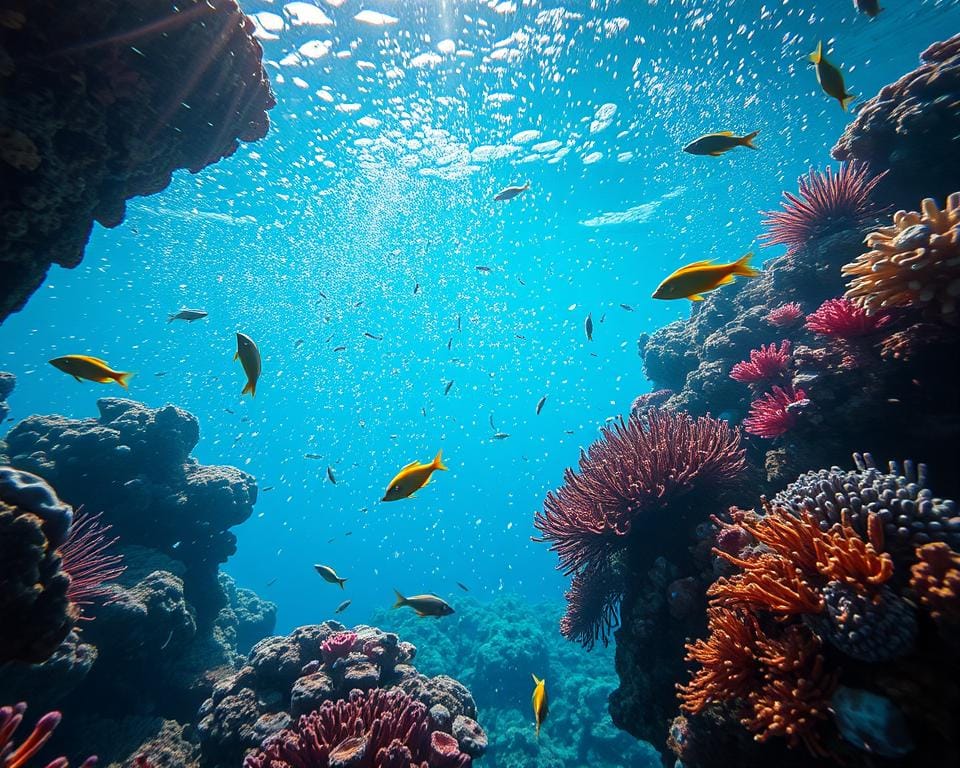Microplastics pollution is a huge problem for our health and the environment. These tiny plastic particles, less than 5 millimeters big, are everywhere in our water. Even smaller ones, called nanoplastics, can get into living cells. Studies show shocking amounts of plastic in bottled water—about 240,000 pieces per liter, with most being nanoplastics. That’s way more than we thought before, because earlier research only looked at bigger pieces. We’re still figuring out how these particles affect our health, but scientists are working hard on it.
In 2024, new tech has made it easier to see and study these tiny pollutants. We can now find all the major types of plastics in water, like polyamide and PET. This shows how critical it is to understand and reduce the harm from microplastics. They threaten not just fish and other sea life, but people too. Microplastics can carry other bad stuff in the environment, making their effects even worse.
We need good water filters, like reverse osmosis systems, to tackle the microplastics problem. Researchers are also trying to get a full picture of how these plastics affect us and the planet. They’re looking at different places in the environment to see where microplastics are and how much.
Understanding Microplastics: Definition and Types
Microplastics are tiny pieces of plastic that pollute the environment. They are divided into two types: primary and secondary. These particles range from 5 millimeters to as small as 100 nanometers. The smallest ones are called nanoplastics. Knowing the difference helps us understand how they affect our world and health.
Primary Microplastics
Primary microplastics are tiny pieces of plastic made on purpose. They are found in products like face scrubs and fibers from clothes. The Microbead-Free Waters Act of 2015 bans plastic microbeads in cosmetics. This law fights against microbeads polluting our planet. A single laundry load can release 700,000 fibers, adding lots of plastics to our waters.
Secondary Microplastics
Secondary microplastics form when big plastic items break down. This happens with sunlight and ocean waves. They end up in places like the Great Pacific Garbage Patch, which is very heavy. The NOAA’s Marine Debris Program works to clean up this mess. Nanoplastics, a smaller type of secondary microplastics, are harder to track and measure.
Let’s compare primary and secondary microplastics:
| Type | Source | Environmental Impact |
|---|---|---|
| Primary Microplastics | Exfoliants, textile fibers | Direct pollution from products, released during washing |
| Secondary Microplastics | Broken down plastic debris | Persistent pollution, widespread in marine environments |
To fight this problem, we need good filters and laws like the Microbead-Free Waters Act. For more on how to check for microplastics at home, see this guide.
Sources of Microplastics in Water
Microplastics in water come from different places and affect both our oceans and health. Understanding where they come from helps us reduce their impact.
Breakdown of Larger Plastic Debris
Larger plastics breaking down into smaller pieces is a main cause of microplastics. This happens when big plastic items wear down from the sun and weather. They turn into smaller pieces called secondary microplastics.
Things like throwing plastic away carelessly lead to this problem. Each year, 8.3 billion metric tons of plastic waste is created. About nine million tons end up in our waters.
This pollution leads to a lot of marine debris. The United Nations says there are about 51 trillion plastic pieces in the ocean. When big plastic items break down, they make microplastics smaller than 5 millimeters. These then pollute the ocean and might even get into the food we eat.

Commercial Microbeads
Microplastics also come from microbeads in products. These tiny plastics are in things like face scrubs and toothpaste. They get past water filters and into the ocean. Even with laws like the Microbead-Free Waters Act of 2015, it’s hard to stop this completely.
Microbeads end up in the ocean and cause problems. Reports show North America and Europe release 134 to 281 kg of microplastics each year. Each person in these places releases 110 to 170 grams per year.
Learning about microplastics and how to reduce their effects is important. For more information on microplastics, check out this sheet by the World Health Organization.
The Impact of Microplastics in Water on Health and the Environment
Microplastics in water are a big problem for both our health and the environment. They are tiny pieces of plastic found in water. These can cause a lot of harm.
Effects on Marine Life
Microplastics have greatly affected marine life. Each year, 8 million tons of plastic waste end up in the ocean. This waste breaks into microplastics, smaller than 5 mm. Many sea creatures, from tiny plankton to big whales, accidentally eat these microplastics.
This causes them harm and can make it hard for them to have babies. It can even poison them. Microplastics can block the animals’ stomachs. This can lead to starvation or death. Chemicals in plastics, like PCBs and phthalates, can leak out and hurt these animals even more.
Microplastics are found in seafood, showing they can get into our food. This means the harmful effects could reach us, too.

Potential Human Health Risks
Microplastics don’t just affect sea life; they could harm our health too. They are found in foods, drinks like water and beer, and even in the air inside our homes. This means we’re exposed to them more than we might think.
Studies are still exploring how they impact our health. But they might cause inflammation, stress in our bodies, or even serious diseases. For example, they might hurt male fertility and the quality of sperm.
A study showed that microplastics can build up in our bodies over time. This could lead to health problems. Because of this, efforts are being made in places like Europe to reduce microplastics by 30% by 2030.
It’s very important to understand the full impact of microplastics. In the European Union, many research efforts like PLASTICHEAL and others are looking into this. They aim to find out more about how microplastics affect us and the environment.
Detection and Measurement of Microplastics in Water
Detecting microplastics in water is key for our health and the planet. Advanced imaging, like laser-based Raman scattering microscopy, is very important. It helps us see microparticles one by one, giving deep insight into microplastic levels.
Studies show microplastic levels in drinking water usually go up to 0.6 particles per liter. To measure accurately, it’s vital to sample a lot of water and use techniques like infrared or Raman microscopy. These methods can identify the types, sizes, and shapes of microplastics, aiding our understanding of their pollution.
Innovative Imaging Techniques
Raman scattering microscopy and environmental scanning are great for analyzing nanoplastics. They’re more sensitive and find many more particles than older methods. The European Commission requires filtering 1000 liters of water to catch solids in two size categories. This is part of new rules under the Drinking Water Directive to protect our health.
Water quality sensors are also crucial for spotting microplastics. Optical sensors work by looking at light absorption or fluorescence to give precise measurements. Together with Raman spectroscopy, these tools identify the size, shape, and type of microplastics in water. This information helps make policies to tackle pollution and protect health.
- Advanced laser-based imaging techniques
- Harmonized approaches to measuring microplastics
- Different types of water quality sensors
New ways to detect and measure microplastics have improved our understanding of plastic pollution. Using Raman scattering microscopy ensures accurate detection. It encourages actions to keep water clean. For more details on water testing, see this comprehensive guide on water testing methods.
Conclusion
The discovery of vast amounts of microplastics in our waters is a major worry for our environment and health. Studies show these tiny particles are everywhere – in nature, animals, and even people. It’s shocking that in just one year, up to three million tonnes of microplastics have entered our oceans. And that’s not counting what goes into the land.
Thanks to better detection methods, like new imaging techniques, we’re learning more about microplastics. They can cause health problems like inflammation, DNA damage, and even colorectal cancer when we take them in. Reducing these particles is vital for our planet’s health and to fight against plastic waste. It’s concerning that we each might swallow a credit card’s worth of microplastics every week.
We all need to work together to tackle the microplastic problem. This means practicing sustainability, raising awareness, and doing intense research. The UN’s Global Plastics Treaty aims to cut down plastic use and lessen microplastic pollution. By increasing our knowledge and taking action, we can aim for a cleaner future. You can learn more by visiting environmental health sites. Let’s strive for a healthier planet for ourselves and future generations.

